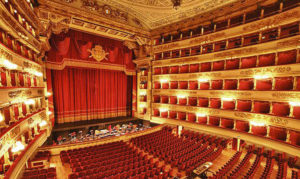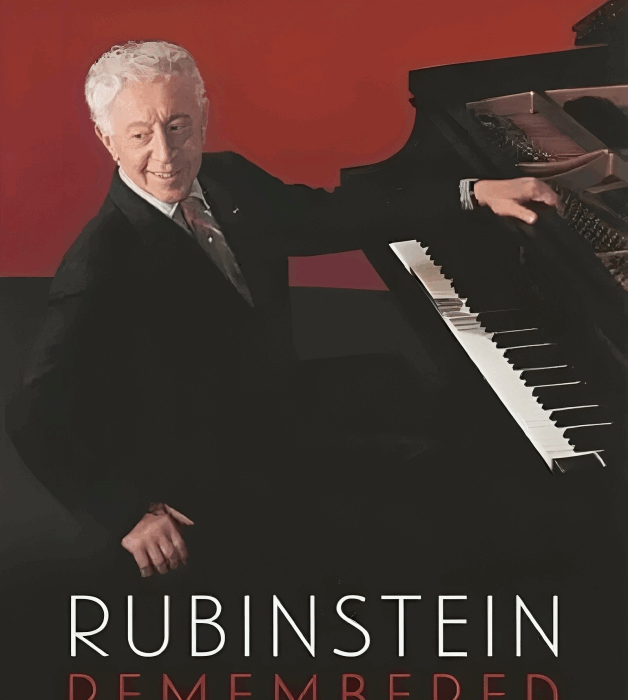
Top 10 Most Historic Opera Houses in the World
By Alkis KarmpaliotisOperaWire is proud to partner with Appreciate Opera, a website founded by Alkis Karmpaliotis which highlights his passion for opera. Karmpaliotis, an OperaWire contributing author, focuses on his passion for opera and how to share it with newer and younger audiences.
There are many opera houses across the world, and each one has its unique qualities and characteristics. There is so much to judge when comparing opera companies, including the singers they attract, the repertoire they perform, the strength of their orchestra and chorus, and the acoustics and beauty of their theater.
Making a list like this is a huge challenge, as there were many amazing opera houses that I had to exclude. Additionally, each of these companies offers something different and interesting to its audience, so when it comes to ranking them, there’s really no single right answer. With that being said, let’s jump right into the list.
Honorable Mentions
Teatro la Fenice
Opened: 1792
Location: Venice, Italy
Many of the greatest operas ever composed, including Verdi’s “La Traviata” and “Rigoletto, “premiered at La Fenice. For over 200 years, it has been one of Europe’s foremost opera companies and is amongst the most beautiful theaters in the world.
Berlin Opera Houses
Opened: Staatsoper Berlin – 1743; Komische Oper – 1892; Deutsche Oper – 1912
Location: Berlin, Germany
Berlin is unique in that it is home to three opera houses, each special in its own right. The Staatsoper Berlin is the oldest and has the most traditional building, but the Deutsche Oper and Komische Oper also have very distinguished histories. It is impossible to say which is better except on a production-by-production basis. For music fans, all three are worth a visit. Berlin is a global capital for opera and classical music, so it would be unjust to not include its three amazing opera houses on this list.
Bayreuth Festspielhaus
Opened: 1876
Location: Bayreuth, Germany
Bayreuth’s unique theater, which includes an orchestra pit beneath the stage rather than in front of it, is home to unmatched acoustics. Its orchestra is arguably the best opera orchestra in the world.
Richard Wagner built the Bayreuth Festspielhaus in 1872 to showcase his own operas. It staged the premiere of “Parsifal.” Since then, every summer, it hosts the month-long Bayreuth Festival and exclusively performs Wagner’s works. This is one of the most prestigious festivals in the world, and the quality of its performances is unparalleled. When it comes to specifically Wagner’s operas, there is no better place to be, as Bayreuth’s theater, orchestra, and singers collectively produce the ideal Wagnerian sound.
Frankly, as a Wagner fan, if I could rank Bayreuth first on every list, I would. However, since it solely performs one composer’s work and only operates for a small portion of the year, Bayreuth does not qualify as a full-scale opera company. With that being said, due to its rich history and consistently elite performances, it is certainly worth an honorable mention.
10. Sydney Opera House
Opened: 1973
Location: Sydney, Australia
Regarded as one of the masterpieces of 20th-century architecture, the Sydney Opera House is one of the most distinctive and unique buildings in the world. The Joan Sutherland Theater, named after Australia’s most famous singer, showcases operas as well as musicals, and the opera house also includes a full concert hall in which classical and modern music are performed.
Sutherland famously bid farewell to the theater in 1990, with a performance of Meyerbeer’s “Les Huguenots.” The stage was covered by green and gold streamers thrown by the audience.
9. Teatro Real
Opened: 1818
Location: Madrid, Spain
The Teatro Real, commonly referred to as simply El Real, is Spain’s most famous opera house, and always attracts the best singers from around the world. Operas and concerts are performed throughout the year. El Real is known for its “My Opera Player” program, on which viewers can watch full operas from not only Madrid but from theaters around the world. This makes opera more accessible worldwide and gives us a taste of opera from across the globe.
8. Teatro di San Carlo
Opened: 1737
Location: Naples, Italy
The Teatro di San Carlo is the world’s oldest continuously active opera house in the world and was the model for opera houses including Venice’s La Fenice and many more. The great opera composer Gioachino Rossini was its artistic director for seven years, before being replaced by another star of Italian opera, Gaetano Donizetti, who worked with the theater for sixteen years. Other great composers such as Giuseppe Verdi and Giacomo Puccini were associated with the company and contributed to making it one of Europe’s premier opera houses. Vincenzo Bellini loved San Carlo and in 1826 made his San Carlo debut with “Bianca e Gernando,” an opera he composed specifically for this stage.
7. Teatro Colón
Opened: 1908
Location: Buenos Aires, Argentina
The Teatro Colón, Buenos Aires’s main opera house, is an international standard for opera and ballet. The original building functioned from 1857 to 1888. The current theater, completed in 1908, which opened with a performance of Aida, incorporated many styles of architecture that were also used in European theaters. Music legends such as Arturo Toscanini and Enrico Caruso, as well as Argentinian icons including Daniel Barenboim and Martha Argerich, have performed there.
6. The Bolshoi Theater
Opened: 1876
Location: Moscow, Russia
Moscow’s Bolshoi Theater has survived fires, wars, and other disasters in its long history. Despite all that it has endured, it remains Russia’s greatest theater and continues to stage operas and ballets throughout the year. Its old theater has excellent acoustics and one of the most gorgeous and recognizable façades in the world. Although not an opera, the Bolshoi Theater’s most notable historical performance was the premiere of Tchaikovsky’s “Swan Lake” in 1877, which is considered by many to be the greatest ballet ever composed.
5. Royal Opera House, Covent Garden
Opened: 1946
Location: London, England
The Royal Opera has only had six music directors throughout its history, including Sir Georg Solti, Sir Colin Davis, and Bernard Haitink. Singers such as Joan Sutherland and Jon Vickers have risen to prominence from the ranks of the company. Though the current building was completed in 1946, there has been an opera house in Covent Garden for centuries. In fact, George Handel wrote many of his operas and oratorios to be performed there. The Royal Opera House’s most famous series of performances came in 1996 when Bernard Haitink conducted three full cycles of Wagner’s Ring Cycle, performances for which both Haitink and the Orchestra of the Royal Opera House won several awards.
4. Metropolitan Opera
Opened: 1883
Location: New York City, United States
With a whopping capacity of over 3,800, the Metropolitan Opera is the biggest opera house in the world. The Met is also the busiest opera company in the world, staging a different opera – and sometimes two – almost every day of the week. The Met is the only theater on this list that is almost exclusively committed to opera, rarely staging ballets or other works. This is because it is located in Lincoln Center, a musical complex that also includes the American Ballet Theater and David Geffen Hall, the home of the New York Philharmonic.
Under the directorship of Yannick Nezet-Seguin, the Met has been making an effort to increase the diversity of its singers as well as, more importantly, the diversity of its repertoire. In recent seasons, the Met has staged numerous contemporary works including several operas by black composers.
The Met’s history of music directors is impressive. Its list of principal conductors includes Gustav Mahler, Arturo Toscanini, and Erich Leinsdorf. The Met Orchestra and Chorus are both world-class, and the company never fails to hire the best singers. The Met’s 1977 performances of “La Bohème” are considered some of the greatest in history, with staging by Franco Zefirelli and pristine singing by Renata Scotto and Luciano Pavarotti. Its place amongst the top-tier theaters in the world is indisputable.
3. Opéra de Paris
Opened: Palais Garnier – 1875; Opéra Bastille – 1989
Location: Paris, France
The Opéra de Paris company performs at two theaters: the Palais Garnier and the newer Opéra Bastille. The Bastille has been considered the greater operatic stage in recent years, but the Palais Garnier, which currently mostly stages ballets, is the more majestic of the two buildings, with its interior walls almost entirely covered by the paintings of Marc Chagall. In the eyes of many opera enthusiasts, the Palais Garnier is the ideal operatic venue, as it stages the finest music, is glazed by the most brilliant art, and is the embodiment of classical culture.
2. Wiener Staatsoper
Opened: 1869
Location: Vienna, Austria
The Vienna State Opera is one of the most respected opera houses in the world. Many important artists have work with the company including Gustav Mahler. It is located in the heart of Vienna, the music capital of the world. The company is so committed to filling up the house that it offers free tickets in the hours leading up to each performance. This ensures that all shows are sold out, expands the audience, and guarantees a special and amazing theater atmosphere – with an audience of all ages. The Orchestra of the Vienna State opera is practically unmatched, as most members of the great Vienna Philharmonic also play in it.
1. Teatro Alla Scala
Opened: 1778
Location: Milan, Italy
La Scala is usually thought of as the ultimate home of opera. Well, that’s exactly what it is.
Soon after its inception, La Scala replaced Naples’s Teatro di San Carlo as Italy’s best opera house. It has since remained the world’s grandest venue for conductors and singers alike. La Scala was particularly prominent during the Golden Age of Opera of the 1950s, during which singers including Maria Callas, Giuseppe di Stefano, and Renata Tebaldi dominated its great stage. Callas and Corelli were given the honor of performing at La Scala’s opening gala very often, most notably in 1960, when they selected Donizetti’s Poliuto and even recorded the performance. Among the conductors who have directed La Scala are Arturo Toscanini, Claudio Abbado, Riccardo Muti, Daniel Barenboim, and now Riccardo Chailly. Operas that had their premieres at La Scala include Bellini’s “Norma,” Verdi’s “Nabucco,” Puccini’s “Madama Butterfly,” and many more.
Categories
Special Features

